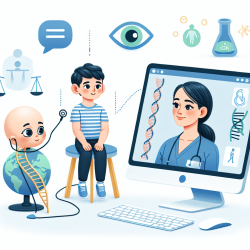Introduction
The intersection of animal communication research and speech-language pathology offers a fascinating avenue for improving therapeutic practices. A recent study titled Behavioral discrimination and time-series phenotyping of birdsong performance provides insights that could be pivotal in enhancing our understanding and methodologies in speech therapy, particularly for children.
Understanding the Study
This research explores the acoustic features of zebra finch songs, highlighting how female zebra finches distinguish between courtship and non-courtship songs. The study employs machine learning algorithms to identify acoustic features critical for song discrimination, uncovering novel features such as time irreversibility. These findings underscore the potential of expansive, bottom-up approaches in acoustic analysis and social decision-making.
Implications for Speech-Language Pathology
By drawing parallels between birdsong and human speech, practitioners can gain valuable insights into the nuances of vocal performance and discrimination. Here are some key takeaways for speech-language pathologists:
- Feature Extraction: The study's use of machine learning to identify critical acoustic features can inspire similar approaches in human speech analysis, potentially leading to more precise diagnostic tools.
- Time-Series Analysis: Understanding time irreversibility in birdsong could inform the analysis of speech patterns in children, particularly in identifying atypical speech characteristics.
- Behavioral Discrimination: The ability of zebra finches to discriminate based on acoustic features suggests potential methodologies for assessing and improving auditory discrimination in children.
Encouraging Further Research
The findings from this study not only offer immediate applications but also encourage further research into the acoustic features of speech. By adopting a similar expansive approach, speech-language pathologists can explore new dimensions of speech analysis, potentially leading to breakthroughs in therapy techniques.
Conclusion
Integrating insights from animal communication research into speech-language pathology can enhance our understanding and treatment of speech disorders. By leveraging data-driven approaches and machine learning, practitioners can refine their methodologies to create better outcomes for children.
To read the original research paper, please follow this link: Behavioral discrimination and time-series phenotyping of birdsong performance.










